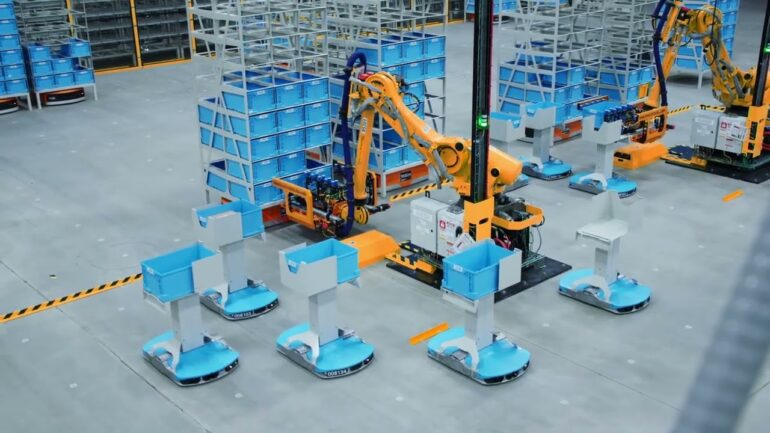TL;DR:
- Amazon partners with MIT and Ipos research firm to study the impact of robotics and AI on jobs.
- The debate centers around whether automation will create or displace jobs.
- The study focuses on human emotions and perceptions regarding robotics and AI.
- Amazon emphasizes its purpose-driven approach to technology deployment.
- The research covers human-robot interaction, emphasizing shared understanding.
Main AI News:
In the ongoing discourse surrounding automation, the ramifications it holds for the job market consistently take center stage. Divergent opinions abound, but a consensus has emerged – the pervasive influence of robotics and artificial intelligence on human employment is inevitable and far-reaching.
Against this backdrop, Amazon unveiled a groundbreaking collaboration with the Massachusetts Institute of Technology (MIT) and the esteemed research firm Ipos. This strategic partnership aims to dissect the multifaceted repercussions of automated systems on the workforce. The announcement was made at the “Delivering the Future” event, hosted at a fulfillment center situated in the south of Seattle.
For Amazon, the matter is of paramount significance. The e-commerce behemoth, renowned for its vast employment footprint, has been integrating robotics into its fulfillment centers for over a decade. The effect of these machines on human employees has been a topic of spirited debate. Amazon contends that these mechanized assistants alleviate the physical labor demands placed on human workers.
However, critics present a contrasting viewpoint. They posit that robots have the potential to dehumanize jobs, particularly those characterized by monotonous repetition. Furthermore, a looming question looms large – what will happen to job numbers? Advocates for automation argue that it will usher in a new era of job creation, while skeptics contend that it will lead to the displacement of numerous blue-collar positions, with the retraining of workers to interface effectively with robots proving to be a formidable challenge.
Yet, the focus of this collaborative study appears to transcend mere statistics. It delves into the realm of emotions and perceptions, seeking to gauge how human employees and the general public perceive the inexorable rise of robotics and AI in various industrial domains, such as warehouses and manufacturing facilities.
Addressing the pivotal issue of job numbers before the event, Amazon Robotics’ Chief Technologist, Tye Brady, offered insights into the company’s approach: “Our operations currently boast more than 750,000 mobile robots and thousands of other robotic systems, facilitating the sorting, identification, and packaging of customer orders. This has been a decade-long journey. During this time, Amazon has diligently hired hundreds of thousands of employees for our operations. Our technology deployment adheres to a purpose-driven philosophy, with a primary focus on utilizing robots to enhance safety and simplify the everyday tasks of our employees.“
The research will extend its purview to encompass critical aspects of robotic advancements, including the dynamic field of human-robot interaction (HRI). MIT’s Julie Shah underscores the importance of shared understanding in effective teamwork: “The key to optimal teamwork lies in establishing a mutual comprehension of our partners’ roles and their requirements for success. Our research underscores that the most effective approach to enhance human-robot team performance entails developing robots that actively collaborate to help humans grasp their capabilities, limitations, and behaviors.”
Conclusion:
Amazon’s collaboration with MIT and Ipos to delve into the effects of robotics and AI on the workforce underscores the importance of addressing both the quantitative and qualitative aspects of automation’s impact. This study could provide valuable insights for businesses looking to navigate the evolving landscape of automation and human-robot collaboration in the market.

